
Marsupial moles, the Notoryctidae family, are two species of highly specialized marsupial mammals that are found in the Australian interior. They are small fossorial marsupials that anatomically converge on fossorial placental mammals, such as extant golden moles (Chrysochloridae) and extinct epoicotheres (Pholidota). The species are:
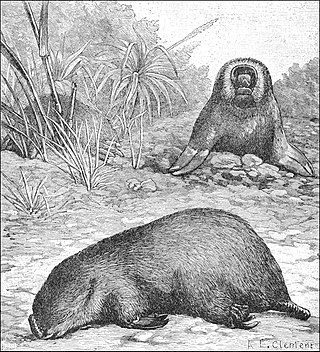
Notoryctidae are a family of marsupials comprising the marsupial moles and their fossil relatives. It is the only family in the order Notoryctemorphia.

The short-billed dowitcher, like its congener the long-billed dowitcher, is a medium-sized, stocky, long-billed shorebird in the family Scolopacidae.
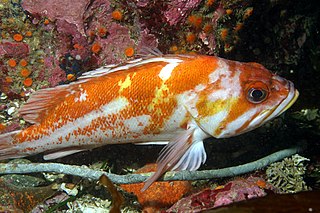
The copper rockfish, also known as the copper seaperch, is a species of marine ray-finned fish belonging to the subfamily Sebastinae, the rockfishes, part of the family Scorpaenidae. It is found in the eastern Pacific.
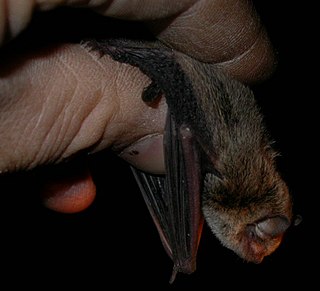
Vespadelus is a genus of Australian bats in the family Vespertilionidae.
The northern cave bat is a vesper bat that occurs throughout most of Australia.
The yellow-lipped cave bat is a vesper bat that only occurs in the Kimberley region of northwest Australia. The bat was first captured at Tunnel Creek in 1958 and a description published nearly twenty years later. Aside from observations of their physical characteristics, a preference for caves, and hunting insects over streams, little is known of the species.
The northwestern fat mouse is a species of rodent in the family Nesomyidae. It is native to tropical West Africa where it occurs on grassland and crop land.

Steatomys is a genus of rodent in the family Nesomyidae. It contains the following species:
The dainty fat mouse is a species of rodent in the family Nesomyidae. It is found in Benin, Burkina Faso, Mali, Niger, Nigeria, and Senegal. Its natural habitat is subtropical or tropical dry shrubland.

The northern marsupial mole or kakarratul is a marsupial in the family Notoryctidae, an endemic animal of arid regions of Central Australia. It lives in the loose sand of dunes and river plains in the desert, spending nearly its entire life beneath ground. The facial features are reduced or absent, their small and strong body, weighing little more the 30 grams, is extremely specialised to moving through sand in search of prey. The species is elusive and it is one of the most poorly understood mammals of Australia.

Mizuhopecten yessoensis is a species of marine bivalve mollusks in the family Pectinidae, the scallops. Its name Yesso/Ezo refers to its being found north of Japan.

Mylocheilus caurinus, the peamouth, peamouth chub, redmouth sucker or northwestern dace, is a species of freshwater ray-finned fish from the family Cyprinidae, the carps and minnows, that is found in western North America. It is the only species in its genus.
The Tirabuzon Formation is a geologic formation in Mexico. It preserves fossils dating back to the Neogene period, Pliocene epoch.
The short-tailed Talaud mosaic-tailed rat or the short-tailed Talaud melomys is a species of rodent in the family Muridae. It is endemic to Karakelong and Salebabu in the Talaud Islands in Indonesia where it occurs in forest habitats. The long-tailed Talaud mosaic-tailed rat is also present on the islands and the shorter tail of this species means that it is likely to be mainly terrestrial whereas M. talaudium is largely arboreal.
The long-tailed Talaud mosaic-tailed rat or the long-tailed Talaud melomys is a species of rodent in the family Muridae. It is endemic to Karakelong and Salebabu in the Talaud Islands in Indonesia where it occurs in forest habitats. It is morphologically similar to the white-bellied mosaic-tailed rat and was at one time considered to be a subspecies but is now recognised as a distinct species. The short-tailed mosaic-tailed rat is also present on the islands and the shorter tail of that species means that it is likely to be mainly terrestrial whereas M. talaudium is largely arboreal.
Scymnus caurinus, the northwestern lady beetle, is a species of dusky lady beetle in the family Coccinellidae. It is found in North America.
Caurinus dectes is a species of snow scorpionfly in the family Boreidae. It is found in North America.
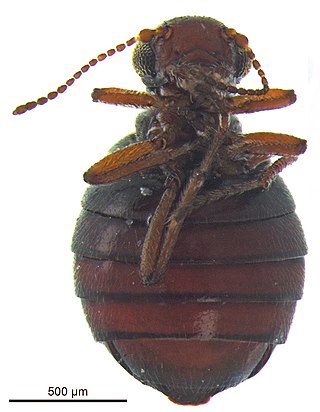
Caurinus is a genus of snow scorpionflies in the family Boreidae. There are at least two described species in Caurinus.
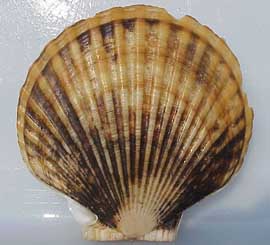
Patinopecten is a genus of bivalves belonging to the family Pectinidae.











